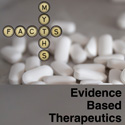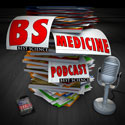Episode 109: More, questions, questions and more questions
In episode 109, Mike and James continue on with listener questions and start off trying to reduce the risk of using risk assessment tools and risk reduction information. They then delve into questions about tapering steroids, antidepressants, side effects from thiazides and sitagliptin and the amazing clarity of their answers is only outdone by the vagueness of their conclusions.
Show notes
1) Prediction with Framingham versus the real risk primary care patients
Heart 2009;95:125–9
2) Relative risk reduction with statins in primary prevention
BMJ 2009;338:b2376
ACP J Club 2009;151:14
Lancet 2005;366:1267–78
Diabetes – Lancet 2008;371:117–25
3) Issues with Framingham/UKPDS risk assessments
UK – overestimates mortality from CHD by 47% and non-fatal CHD by 57%
BMJ 2003;327:1-6
Germany, Italy, and Denmark – overestimates risk by 50%
China – overestimates CHD rates by 5 fold
JAMA 2004;291:2591-9
UKPDS and Framingham
Major CVD – risk overestimated by 170% (95% CI 146–195%) and 202% (176–231%) using the two Framingham equations
Major coronary heart disease – risk overestimated by 198% (162–238%) with the UKPDS, and by 146% (117–179%) and 289% (243– 341%)
with the two different Framingham equations
Stroke – risks over-estimated with the UKPDS and one of the Framingham equations
Diabetologia 2010;53:821–31
Heart 2006;92:1752-9
4) Tapering corticosteroids
Am J Med 2009;1222:977-91
5) Incomplete publication of antidepressant studies leading to bias (publication bias)
NEJM 2008;358:252-60
BMJ 2003;326:1171-3
6) Meta-analysis of antidepressants
Ann Intern Med 2005;143:415-26
Ann Intern Med 2008;149:734-50
Lancet 2009;373:746–58
Tools for Practice Website
http://www.acfp.ca/docs09/SecondGenerationAntidepressantsToolsforPracticefinal.pdf


